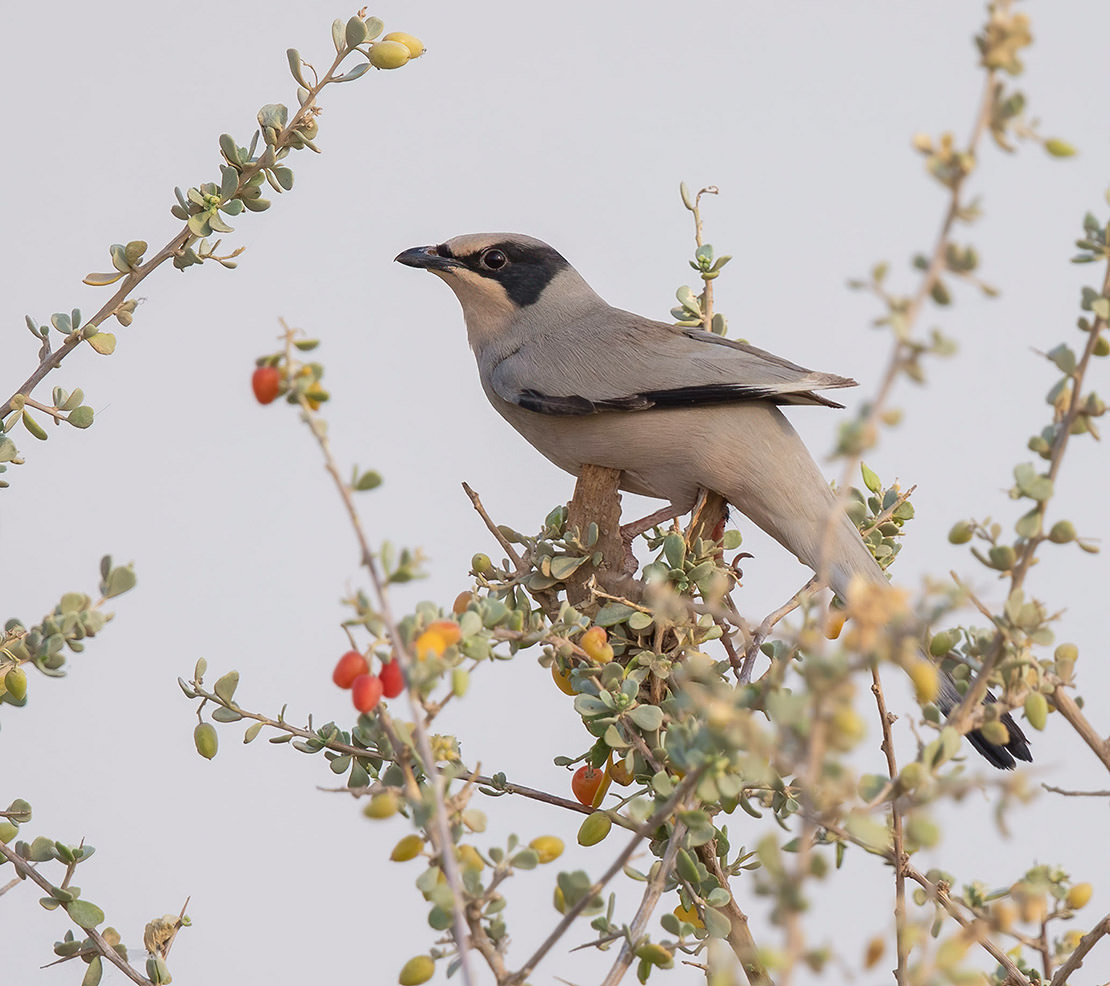Afghanistan – Armenia – Azerbaijan – Bahrain – Cyprus – Egypt – Georgia – Iran – Iraq – Israel – Jordan – Kazakhstan – Kuwait – Kyrgyzstan – Lebanon – Oman – Qatar – Saudi Arabia – South West Russia – Syria – Tajikistan – Türkiye – Turkmenistan – United Arab Emirates – Uzbekistan – Yemen

Capital: Kuwait City
Area: 17,818 km2
BirdLife International partner: Kuwait Environment Protection Society
Total number of bird species: 417 – KORC Checklist of Birds
Globally threatened bird species: 39
Country endemics: 0
Important bird and biodiversity areas: 8 IBAs with a total area of 899 km2
Rare birds committee: Kuwait Ornithological Rarities Committee – Neil Tovey (Chair), AbdulRahman Al-Sirhan (Secretary), Omar Al-Shaheen, Humoud Al-Shayji, Markus Craig, Mike Pope
Specialities:
Socotra Cormorant, Crested Honey Buzzard, Asian Shikra, Crab-plover, Lesser Sand Plover, Greater Crested Tern, Lesser Crested Tern, White-cheeked Tern, Indian Roller, Hypocolius, Black-crowned Sparrow-lark, White-eared Bulbul, Red-vented Bulbul, Basra Reed Warbler, Afghan Babbler, Bank Myna, Common Myna, Eversmann’s Redstart, Pale Rockfinch, Yellow-throated Sparrow, Rüppell’s Weaver
ABBA project:
The Atlas of the Breeding Birds of Arabia (ABBA) aims to document the distribution of breeding birds in the Arabian Peninsula. The project is run by Mike Jennings and birdwatchers’ field observations are a valuable source of data. For information and notes on reporting, along with breeding record submission forms, please email Mike: mikejennings@arabianbirds.com.
Ornithological interest:
Kuwait is located at the southeast corner of the Western Palearctic and, considering its small size and harsh climate, possesses a rich avifauna, with more than 400 species recorded. 90 species breed and Kuwait is very notable for its passage migrants and winter visitors. The country sits at the crossroads of several major bird migration routes between continents. Birds from Eastern Europe travel through the river valleys of Turkey, Syria and Iraq before reaching Kuwait. A second important route sees large numbers of birds arriving from north and east of the Caspian Sea, crossing Kuwait on their migrations. Hunting of migratory birds is illegal and the strict ban that is in place is increasingly effective.
Kuwait is an excellent country to see a number of regional specialties. Together with the species listed in the Specialities section above, Red-tailed Wheatear, Bridled Tern, Asian Desert Warbler and Ménétries’s Warbler can be found. The small size of the country means that many species can be seen in a relatively short period of time by visiting a few key sites with specific habitats. Bubiyan Island, an uninhabited mudflat with many creeks and islets, is an important site where a number of target species breed regularly. These include Dalmatian Pelican, Crab-plover, Slender-billed Gull, Indian Reef Heron, Eurasian Spoonbill, Gull-billed Tern and Lesser and Greater Crested Terns. Desert Finch, Pale Rockfinch, Yellow-throated Sparrow and Hypocolius also breed in Kuwait.
Best times to visit:
Winter is the best time to visit and in November, Asian Shikra, Crested Honey Buzzard and Eversmann’s Redstart are regular. December is good for Indian Roller and in late December there is a good chance of seeing Lesser Flamingo. Between November and March, Daurian and Masked Shrikes, Ménétries’s, Barred and Asian Desert Warblers, Lesser Whitethroat, Eastern Black Redstart and Red-tailed Wheatear can all be found. Late April is the best time to see Basra Reed Warbler, Socotra Cormorant and White-cheeked Tern.
For guided bird tours see Birdwatching Tours in Kuwait on the Birds of Kuwait website (see link below).
Essential reading:
Porter R & Aspinall S (2010) Birds of the Middle East, Christopher Helm.
.دليل الطيور في الشرق الأوسط (Nature Guides Ltd). تطبيق على نظام أندرويد وآبل
بورتر، ر.، أسبينال، س.، 2016. طيور الشرق الأوسط. ترجمة عبد الرحمن السرحان وتدقيق لغوي وعلمي: نابغ غزال أسود. اصدار البيردلايف انترناشيونال وجمعية علم الطيور بالشرق الأوسط والقوقاز. عمان، الأردن
The above two references in Arabic are the Arabic smartphone app version of Birds of the Middle East (Porter & Aspinall) and the Arabic book version of Birds of the Middle East (Porter & Aspinall).
AbdulRahman Al-Sirhan’s website is an excellent source of up-to-date information: https://www.birdsofkuwait.com/
Trip report links:
Compiler:
AbdulRahman Al-Sirhan
